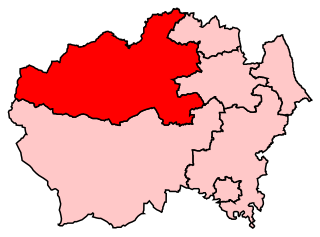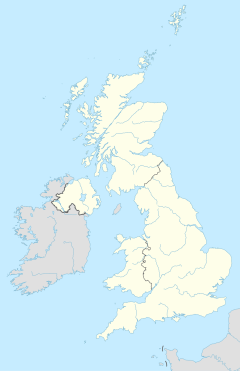Subscriber trunk dialling (STD), also known as subscriber toll dialing, is a telephone numbering plan feature and telecommunications technology in the United Kingdom and various Commonwealth countries for the dialling of trunk calls by telephone subscribers without the assistance of switchboard operators.

Derwentside was, from 1974 to 2009, a local government district in County Durham, England.
A telephone numbering plan is a type of numbering scheme used in telecommunication to assign telephone numbers to subscriber telephones or other telephony endpoints. Telephone numbers are the addresses of participants in a telephone network, reachable by a system of destination code routing. Telephone numbering plans are defined in each of the administrative regions of the public switched telephone network (PSTN) and in private telephone networks.

In the United Kingdom, telephone numbers are administered by the Office of Communications (Ofcom). For this purpose, Ofcom established a telephone numbering plan, known as the National Telephone Numbering Plan, which is the system for assigning telephone numbers to subscriber stations.
Burnopfield is a village in County Durham, in England. It is situated north of Stanley and Annfield Plain, close to the River Derwent and is 564 feet above sea level. There are around 4,553 inhabitants in Burnopfield. It is located 7 miles from Newcastle upon Tyne and 15 miles from Durham.

North West Durham is a constituency represented in the House of Commons of the UK Parliament since 12 December 2019 by Richard Holden of the Conservative Party.

North Durham is a constituency represented in the House of Commons of the UK Parliament since 2001 by Kevan Jones of the Labour Party.
The Big Number Change addressed various issues with the telephone dialling plan in the United Kingdom, during the late-1990s and early-2000s.
A linked numbering scheme (LNS) is a dialing procedure in effect in a service area within which call routing between adjacent exchanges does not require a dialing code. The term is only used in the United Kingdom, but not in the North American Numbering Plan.
Widespread UK telephone code misconceptions, in particular brought on by the Big Number Change in 2000, have been reported by regulator Ofcom since publication of a report it commissioned in 2004.

020 is the national dialling code for London in the United Kingdom. All subscriber numbers within the area code consist of eight digits and it has capacity for approaching 100 million telephone numbers. The code is used at 170 telephone exchanges in and around Greater London as part of the largest linked numbering scheme in the United Kingdom. In common with all other British area codes the initial '0' is a trunk prefix that is not required when dialling London from abroad.

The New Zealand telephone numbering plan describes the allocation of telephone numbers in New Zealand and the Pitcairn Islands.
0191 is the UK telephone dialling code used by Newcastle, Durham, Sunderland and other nearby areas in the north east of England.
01708 is the national dialling code for Romford in the United Kingdom. The area it serves includes almost all of the London Borough of Havering and some adjacent areas. When STD codes were first introduced, Romford was assigned 0708 and 0402 was used for the rest of the current code area. After a sequence of changes in the early 1990s, culminating with PhONEday, the current 01708 code became active on 16 April 1995. All subscriber numbers within the area code consist of six digits. The code is used at eight telephone exchanges as part a linked numbering scheme. In common with all other British area codes the initial '0' is a trunk prefix that is not required when dialling Romford from abroad.
The 01633 telephone area code covers the city of Newport and surrounding areas in the United Kingdom. Before PhONEday the area code was 0633, which was originally dialled as "0NE3" where the "NE" were formed from the first two letters of NEwport on the telephone dial. In common with all other British area codes the initial '0' is a trunk prefix that is dropped when dialling from abroad.
Telephone numbers in the United Kingdom have a flexible structure that reflects their historical demands, starting from many independent companies through a nationalised near-monopoly, to a system that supports many different services, including cellular phones, which were not envisaged when the system was first built. Numbers evolved in a piecemeal fashion, with numbers initially allocated on an exchange-by-exchange basis for calls connected by manual operators. Subscriber numbers reflected demand in each area, with single digit telephone numbers in very rural areas and longer numbers in cities.






